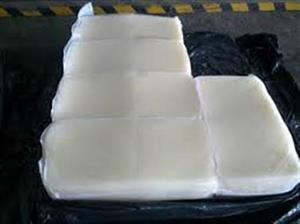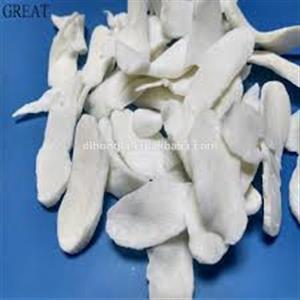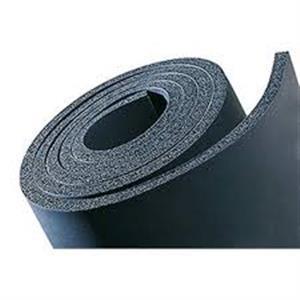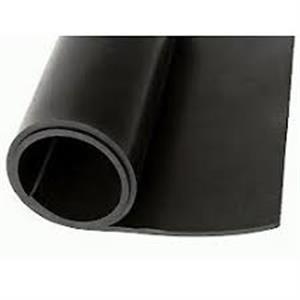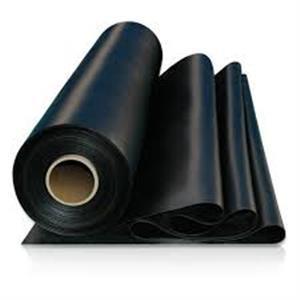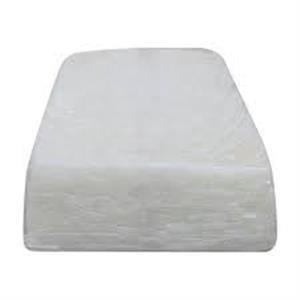
Ethylene Propylene Rubber
Polybutadiene can be produced by both emulsion and solution polymerisation. Emulsion polymers are of random nature in stereospecificity. Solution polymers can be manufactured into stereospecifically tailor-made forms. It is achieved with the use of different catalysts such as anionic or ziegleratta type. BR has excellent resilience, abrasion resistance, and low temperature flexibility. BR can have higher filler loading and oil extension without property deterioration. Tear strength and resistance to cut growth are relatively poor for BR and hence is used as a blend with other rubbers. About 90% of BR is used in tyres, blended in various proportions with SBR, NR etc. Other application of BR is as an additive in rigid plastics such as polystyrene for impact modification. Other engineering applications such as V-belts, conveyor belting, solid rubber tyres, antivibration mounting roller covering and flexible heavy duty suction and discharge hoses.
Styrene - Butadiene Rubber (SBR)
SBR is the largest tonnage synthetic rubber being made all over the world. It accounts for about 60% of the synthetic rubber production and more than 30% of all the rubber consumed. It is a copolymer of butadiene and styrene. The most common SBR is having approximately 25% styrene and 75% butadiene with a random distribution of monomers. There are about 500 grades of this rubber including a large proportion of oil-extended forms and masterbatches of SBR with carbon black. SBR exhibits good abrasion resistance and hence its major application is in tyre sector, especially in passenger car tyres. Other important applications include soles and heels for the footwear, floorings, mats and other domestic items, conveyor belting, hose, rollers, cycle tyres, buffers, gaskets and a large number of other industrial components. About 90% of the SBR produced is by emulsion polymerisation and the rest by solution polymerisation. In addition, about 10% of all the SBR produced is marketed in latex form and is used for applications such as carpet backing, paper coating and latex foam. There is also a small but growing quantity used in adhesives such as butadiene styrene vinyl pyridine for making tyre cord adhesives.
Silicone Rubber (Q)
Silicone rubbers differ from other synthetic elastomers primarily because they are not organic carbon compounds. Instead of a chain of carbon atoms, the backbone of their molecules is made up of alternate atoms of silicone and oxygen. Physical properties are relatively poor at room temperatures, but they retain their strength and elasticity over a much wider range of temperature than hydrocarbon rubbers. In addition, they have good electrical properties, resistance to aging, weathering and ozone. They also have excellent colour consistency. Their most important uses are in the aerospace industry and other branches of sophisticated engineering, where they provide seals and electrical insulation capable of withstanding working temperature as low as –100oC and as high as 200oC or even higher. Chemically they are extremely inert, and they have the valuable stick property common to most silicones. Silicones, therefore, are used for conveyor belting in the food processing and confectionery industries, for pharmaceutical stoppers, and in surgical applications for blood transfusion tubing, artificial heart valves, dialytic membranes in kidney machine, cable insulation and seals.
Polyurethane (EU/AU)
Polyurethanes differ from most other rubbers in that they do not necessarily have to be vulcanised, though some vulcanizable types are available for processing on ordinary rubber manufacturing machinery. As solid rubbers, they have great strength and abrasion resistance, and good resistance to oil and to all forms of oxidation. They are used for roller covering – especially printers rollers – solid tyres, gear wheels, and other engineering components. Polyurethane is used for fabric coatings and synthetic leathers and for very fine type of elastic thread. The main use of polyurethane is in foam. The flexible foam is extensively employed for upholstery, both in vehicles and in furniture, and in foam-backed textiles. Semi-rigid foams are mostly used for safety padding in autos. Rigid foams provide heat insulation in buildings and core material for sandwich construction.
Fluoro Rubbers (CFM)
The fluoro-carbon and fluoro-silicone rubbers are among the most expensive elastomers in the market. Their main function is to provide oil seals and hose capable of withstanding hot lubricants and hydraulic fluids at temperature of 200oC and beyond and hence are mainly being used in aerospace industry. They also have very good electrical characteristics combined with low water absorption.
Ethylene vinyl acetate
(Also known as EVA) is the copolymer of ethylene and vinyl acetate. The weight percent vinyl acetate usually varies from 10 to 40%, with the remainder being ethylene. It is a polymer that approaches elastomeric materials in softness and flexibility, yet can be processed like other thermoplastics. The material has good clarity and gloss, barrier properties, low-temperature toughness, stress-crack resistance, hot-melt adhesivewater proof properties, and resistance to UV radiation. EVA has little or no odor and is competitive with rubber and vinyl products in many electrical applications.
 355.jpg)


